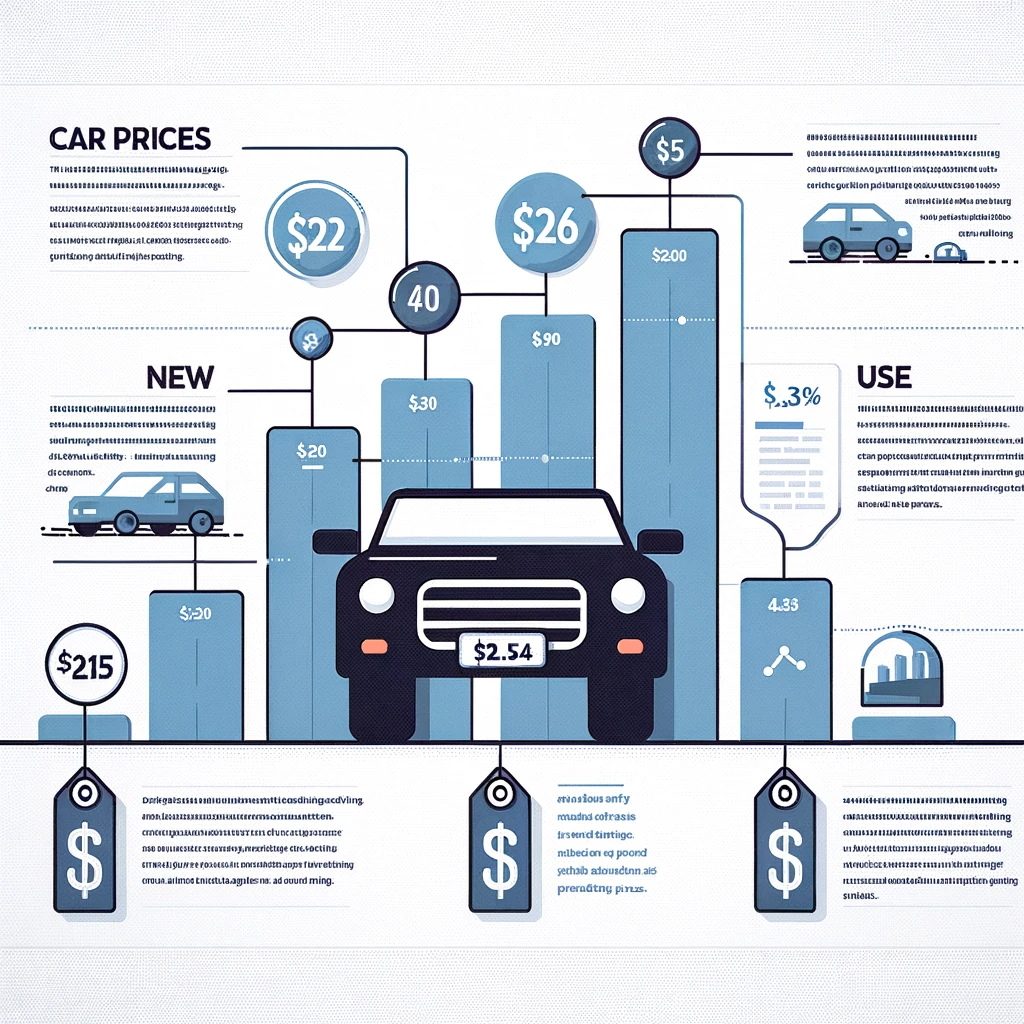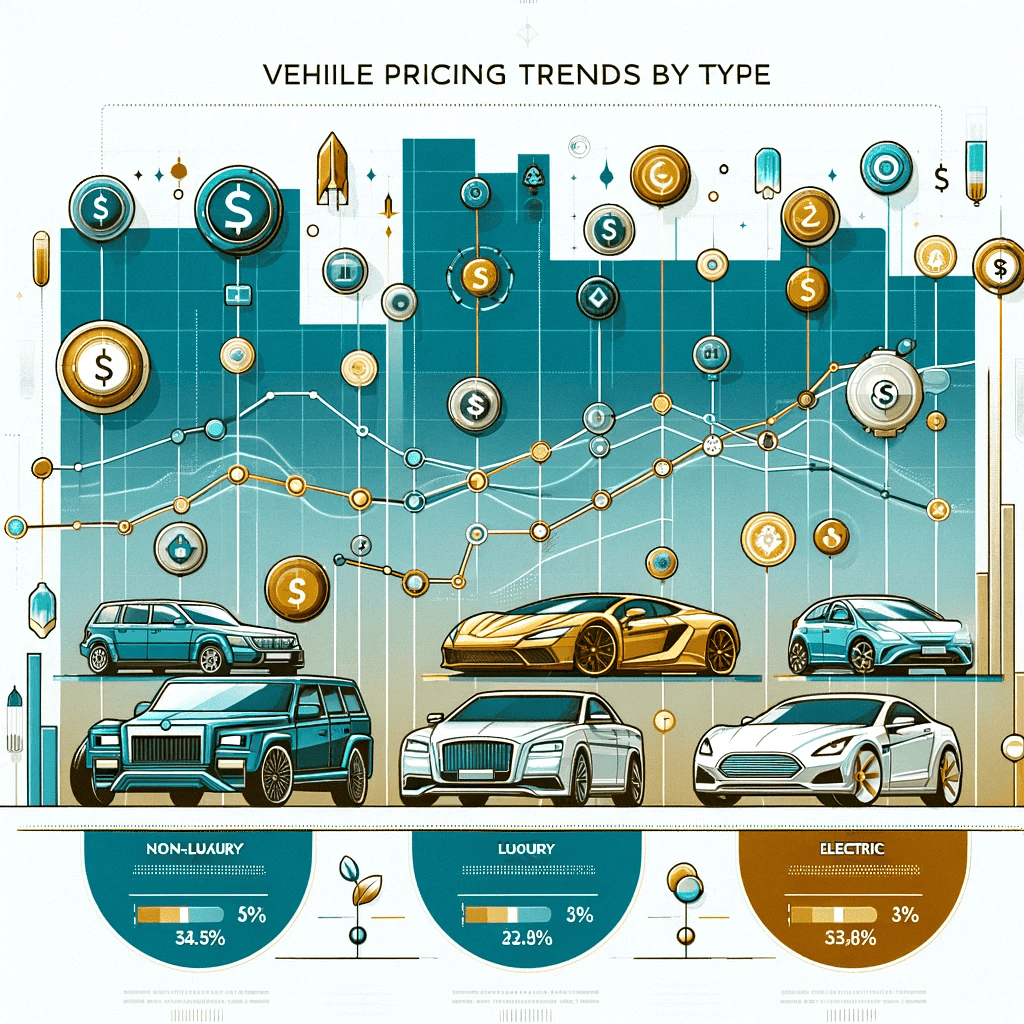Table of Contents
The automotive market has experienced significant fluctuations over the past few years, especially within the used car sector. In 2022, the market was characterized by unusually high prices. However, as we approach the end of 2023, there are indications of potential shifts towards more affordable for consumers. While the prices of used cars have remained relatively stable at retail dealerships, there has been a noticeable decline in prices at wholesale auctions for several months. This trend suggests that lower prices could eventually be passed on to retail buyers, particularly with the influence of year-end sales in the new car market.
For people who are hoping for lower prices on used cars, December 2023 looks like it could be a good time. There’s a chance that prices might go down a lot, especially because Black Friday sales in November are getting more people interested in buying new cars. This could help lower the prices of used cars too.
Looking ahead to 2024, the automotive market might continue to evolve. The decade began with a dramatic downturn in car sales due to the pandemic, followed by a severe supply shortage that dramatically increased prices. These events have established a new, higher baseline for car prices. As we move into 2024, it remains to be seen whether there will be a significant drop in car prices. Buyers are currently facing high interest rates and limited supply, but the market may offer some relief as it continues to adjust to post-pandemic conditions and supply chain improvements.
Some Facts About Car price:

- Average New Car Transaction Prices: In October 2023, the average transaction price for new cars was approximately 21% higher than it was in the same month three years earlier, during the peak uncertainties of the pandemic. This significant increase reflects the market’s adjustment to various economic factors that have emerged since the pandemic.
- Price Stability Compared to Last Year: Despite the overall increase since the pandemic, the average transaction prices for new cars in October 2023 remained relatively stable compared to the previous year. This stability indicates a leveling out in the market after the significant fluctuations of the past few years.
- Electric Car Prices: A notable change in the market is seen in the electric car segment. Electric car prices have decreased by about $13,000 compared to a year ago. This drop could be attributed to a variety of factors, including increased production, technological advancements, and growing competition in the electric vehicle (EV) market.
- Manufacturer Incentives: In October 2023, car manufacturers offered an average of about $2,400 in incentives. These incentives, which can include discounts, rebates, and special financing options, are often used to attract buyers in a competitive market.
- Availability of Specific Brands: The availability of new cars from certain manufacturers varied as of October 2023. Brands like Dodge, Chrysler, Ram, and Jeep were relatively easier to find for consumers. In contrast, popular brands like Toyota, Honda, Kia, and Subaru were not as readily available. This variation in availability could be influenced by factors like manufacturing delays, supply chain issues, and brand-specific demand.
When will car prices drop?
Predicting car prices for 2024 involves considering several factors and trends currently shaping the automotive market. Here’s an overview of the key insights and predictions from various sources:
- New Car Prices: According to Edmunds, new vehicle prices are expected to plateau in 2024 after significant increases spurred by the COVID-19 pandemic. Improved inventory levels have brought incentives back into the market, but affordable vehicles are selling quicker than more expensive ones, indicating continued high demand in this segment.
- Used Car Market: Industry insiders predict that the scarcity of pre-owned vehicles will likely extend through this decade. The focus of manufacturers on producing high-margin vehicles, particularly for supporting their EV initiatives, might lead to a continued shortage in the affordable used car market.
- Electric Vehicle (EV) Trends: EV sales have been increasing steadily, and this trend is expected to continue. Tesla is predicted to maintain a dominant position in the EV market, even as other legacy automakers ramp up their EV offerings. The mainstream adoption of EVs is also influencing brand loyalty, with mainstream-branded EVs seeing a high rate of luxury vehicle trade-ins.
- Market Dynamics and Consumer Behavior: The car market in 2024 is expected to be influenced by various factors including rising interest rates, evolving online car buying platforms, and a gradual return to pre-pandemic norms. Shoppers are advised to be well-informed and realistic about the total cost of ownership when making a purchase decision.
- Hybrid Vehicle Sales: Hybrid vehicles are gaining market share as more consumers opt for electrified options. Hybrids are transacting more quickly and at less of a discount than both EVs and pure gas competitors, making them an attractive option for many buyers.
- Pricing and Buying Strategies: Despite some price stabilization, car shoppers are advised to be strategic in their purchase decisions. Factors like inventory availability, manufacturer incentives, and used car prices will continue to play significant roles. It’s suggested that waiting until 2024 might be the right move for most car buyers, especially those looking for better deals in the used car market.
- Global Factors and Wildcards: Various global factors and unforeseen events, such as geopolitical tensions and economic shifts, could impact the automotive market in 2024. Additionally, potential policy changes during the U.S. election year might add another layer of unpredictability.
While some stabilization in car prices is expected, the automotive market in 2024 will be influenced by a complex mix of factors including continued interest in EVs and hybrids, manufacturer strategies, global economic conditions, and evolving consumer behaviors. Buyers are advised to stay informed and consider all aspects, including total cost of ownership and market trends, before making a purchase.
vehicle pricing trends by type

-
Non-Luxury Vehicle Prices:
- Average Transaction Price: As of October, the average price paid for non-luxury vehicles was $44,331.
- Price Stability: These prices have remained relatively stable since January.
-
Luxury Vehicle Prices:
- Average Transaction Price: The average price for luxury vehicles was $62,903.
- Market Share: Luxury vehicles account for approximately 19% of total vehicle sales.
- Year-Over-Year Change: There has been a significant drop in luxury vehicle prices, decreasing by about 7.4% compared to the previous year.
-
Electric Vehicle Prices:
- Average Transaction Price: The average transaction price for new electric cars was $51,762.
- Comparison to Previous Year: This is a decrease from around $65,000 a year ago.
- Specific Example: Tesla’s Model X has seen a 23% drop in its average transaction price compared to October 2022.
- Overall Trend: Average prices for electric vehicles have decreased by approximately $13,000 compared to last year.
How Can I Get a Good Used Car Price Right Now?
Getting a good price on a used car currently involves a combination of thorough research, careful inspection, and strategic negotiation. Firstly, it’s essential to understand the market value of the car you’re interested in. Utilize resources like Kelley Blue Book, Edmunds, and Consumer Reports to get an idea of the average prices for the specific make and model. This knowledge is crucial for effective negotiation.
Condition and history are key factors in determining a car’s worth. Make sure to inspect the car thoroughly or have it checked by a trusted mechanic. A vehicle history report is also vital as it can reveal past accidents or other issues that might affect the car’s value.
When negotiating, use the information you’ve gathered about the car’s condition, mileage, and market value to your advantage. Remember that sometimes private sellers may offer better prices than dealerships, but it’s important to be diligent in verifying the car’s condition and history.
Timing can also play a significant role. Shopping at the end of the month or during off-peak seasons like winter can sometimes lead to better deals, as dealers might be more eager to meet sales targets or clear inventory.
If you’re also looking to sell your used car, services like “YourCarIntoCash” can be a convenient option. They offer a service to evaluate and buy used cars, potentially providing a quick and easy selling process.
In summary, the key to getting a good used car price lies in doing your homework, being thorough in your inspection and history checks, and being smart in your timing and negotiation. With the current market trends, staying informed and prepared can lead to a successful purchase or sale.


